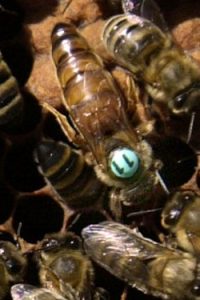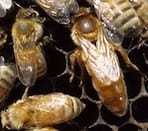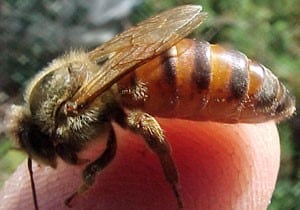Complete guide to honey bee races
Learn about honey bee races and their characteristics

What are honey bee races exactly? What is the difference between a species and a race?
Most of the honey bees have similar traits and are therefore classified in the same species: Apis mellifera
This means that in most of the cases, in which we interact with bees that produce honey we are facing bees of this Apis mellifera species.
Let’s discover the races of honey bees and their characteristics7.
But wait, what exactly is a honey bee race?
Wherever a given race of honey bees is at home, it turns out that its home is set apart by impassible natural obstacles.
Isolation by natural barriers, mountains, seas and deserts by forcing in and in breeding and natural selection is the predominating agent in the origin of races.
OK, and what is a characteristic of a honey bee?
A characteristic is a trait or a structure peculiar to a group of individuals. Honey bees, like all other living things, vary among themselves in traits such as temperament, disease resistance, swarming tendency, brood raising periods, temperature preference, production preferences (more inclined to produce honey, propolis or pollen) and general productivity.
The definitions of races and of characteristics are thoroughly connected.
A group possessing certain characteristics is called a race.
The most common races of bees are the Italians, Caucasians, Germans, Carniolans, Africans8.
Then we have hybrid breeds made by humans: Buckfast, Africanized, Russians, Cordovan.
The characteristics among the various races of honey bees can make a difference in the success or failure of your hive, even if they seem to be subtle9.
Last, but not least, we introduce you to the
Feral Honey Bee (Apis mellifera …)
These bees are escaped swarms or unmanaged colonies to be found in the wild. They are genetically diverse and acclimated to the area they are present in.
You can’t buy them, they must be captured or be obtained through interbreeding with local drones. Their parentage is unknown.
Do you want to discover more about the single honey races and hybrids?
Click on the buttons below to show the full information.
PURE RACES:
HYBRIDS:
You want to have all bee races compared to each other?
We crafted 2 overviews for you10.
Go to Part 1 and find an overview of all honey bee races and their traits
Go to Part 2 and find an overview of all honey bee races and their pros, cons and fun facts
Find out which bee race suits best to your abilities and your climatic area.
PURE HONEY BEE RACES
ITALIAN BEES
Apis mellifera ligustica
Originally from the Apennine Peninsula in Italy, the true Italian breed is the ligustica. Their home country is geographically set apart from the rest of Europe by the Alps and is almost surrounded by the sea. This circumstance kept this race separated from outside influences and other races. It is said to be the most widely distributed bee in the world.

EUROPEAN DARK BEES
Apis mellifera mellifera
History of the European dark bee
The European dark bee is also called Western European Honey Bee , the dark or black bee .
During the various phases of the Ice Age, the European primeval honeybee (Apis) migrated back and forth between northern and southern Europe. During the last ice age, which ended about 11,700 years ago, the Alpine countries of Switzerland and Austria were completely covered with ice. The primeval bee retreated back to Southern Europe.
From the end of the ice age onwards, the climate on the European continent warmed up again. On the Iberian Peninsula the subspecies of the Iberian bee had established itself, in Italy the Ligustica bee and in the Balkans as far as Vienna the Carnica bee. The newly formed subspecies of the dark bee had to cross the Alps to reach its future territory on the northern side of the Alps. From the French Mediterranean coast the Dark Bee spread 9000 years ago around the eastern and western flanks of the Alps to Germany and from there into the Alpine valleys of Austria and Switzerland. The dark bee followed a “pioneer plant”, the hazel.11

Many, many years later it was the first honey bee that was brought to North America.
But why would people bring bees from so far away and on such a long trip over the whole Atlantic?
Interestingly, honey bees are not native to the North America, even if it is home of about 4,000 native species of other bee species.
Thus, dark bees were brought to America in the 17th century by the early European settlers. They were the first and only race found in the U.S. until 1860, when the hybridization, chiefly with the gentler Italian bees has taken place.
CARNIOLAN BEE

AFRICAN BEE

BUCKFAST

CORDOVAN BEE

RUSSIAN BEE


